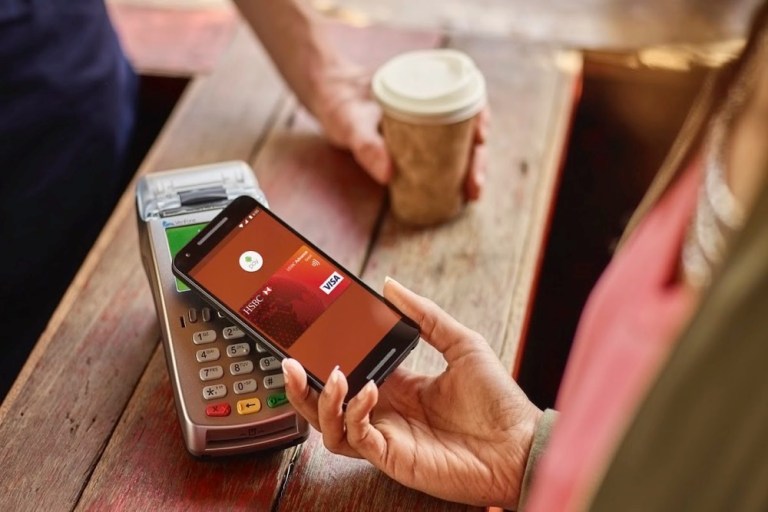
When Google first gave a sneak peek of Android Pay a smidge less than a year ago on May 28, 2015, the knee-jerk reaction of many payments pundits was to call it a “copy/paste version of Apple Pay.”
When Android Pay launched, it had the backing of all the major card brands, along with a handful of issuers, and it used NFC technology to enable payments in-store. Android Pay was also open, selectively, to developers to enable in-app payment.
Android Pay currently is supported by 102+ banks and credit unions and somewhere over 1 million merchant locations (63 different merchants, according to the list on its website). All of the same merchants that also support Apple Pay.
So, more or less, a cut and paste of Apple Pay…
But, it was quick to say, there was more to come.
And now, a year after the first signs of Android Pay made their way into the U.S. mobile payments news flow, Google has delivered on its promise to expand the service in a variety of new ways.
Android Pay graced the U.K. with its presence officially on May 18, and the next countries on the rollout agenda are expected to be Singapore and Australia, though there’s no set date for those. The eligible cards are either a MasterCard or Visa credit or debit card from one of its supported banks — Bank of Scotland, First Direct, Halifax, HSBC, Lloyds Bank, M&S Bank, MBNA and Nationwide Building Society. More are expected to be added.
For Google and the other mobile payments players, the U.K. is a particularly important market given the high contactless penetration. In fact, new data from Visa Europe shows that one in five of all physical card payments under £30 in the U.K. are now contactless payments. This rise in contactless payments usage shows a fivefold increase by shoppers.
But What About The Nine Months Before That?
Admittedly, Google has been quiet on the Android Pay front, but here’s a few stats about what we do know:
Android Pay’s Digital Evolution
Google also announced on May 18 at its I/O conference that it’s working to make it easier for the developer community to integrate Android Pay and bring speedy checkout to apps through the expansion of its APIs.
Pali Bhat, global head of payments products at Google, posted on Google’s blog that the goal is to expand the portfolio of merchants who can benefit from Android Pay — from the very largest to the very smallest — improve purchase conversions within apps and in the browser and help merchants to engage and acquire new customers.
Bhat said that Android Pay has already been working with a number of popular apps, including Airbnb, Yelp, Eat24, Kickstarter, Ticketmaster and Uber, and hopes to bring that same in-app experience to all developers, no matter how big or small.
Google has also decided to open Android Pay APIs to any developer facilitating the sale of physical goods and services, as long as they are in markets where Android Pay is available. Finally, new payment processors, including Braintree, Stripe and Vantiv, have also been added that will enable Android Pay integration to take place in just a few hours with 10 lines of code or less.
Getting Users To Try
When it comes to igniting mobile payments schemes, it all comes down to one issue: convincing consumers there’s value in ditching their wallets for a mobile phone as a way to pay at checkout.
Google also has been known for its unique promotions to attempt to spark interest for Android Pay. This included a “Tap 10” promo, which gave users a variety of rewards for using Android Pay. As its name suggests, users were rewarded for their first 10 taps made with Android Pay. One of the rewards received after those first 10 taps was a free Chromecast.
And then, there was the free data scheme that was offered through Verizon. As part of a new promotion, Verizon is offering up to 2GB of free data if customers use Android Pay at a retailer that accepts the mobile payments option. The customer can gain 1GB of free data for purchasing an item and can gain a second GB after the third purchase made via Android Pay.
There was also a clever promotion announced on May 18 called Android Pay Day, which gives consumers a variety of discounts and offers the last week of the month if they use Android Pay.
Android Pay Adoption Figures
Getting any consumer to use any mobile wallet in the store is hard. PYMNTS’ first study on usage of all mobile wallets was in March 2016. According to that data, 40 percent of respondents (1,488 Android users surveyed) didn’t care to use the option, as they said they were satisfied with their current payment method. From there, 28 percent were worried about security, and 16 percent weren’t quite sure how mobile payments work.
Of those consumers who could use Android Pay (10 models available), only 13 percent said they had used it, which was just 0.9 percent of eligible transactions. When asked why they didn’t use Android Pay for a specific transaction, here’s how the numbers broke down:
Overall, the key takeaways from the research showed that Android Pay, along with Samsung Pay and Apple Pay, all faced the same challenges: Consumers either didn’t care to use them, didn’t know how to use them or simply forgot.
Either way, those stats don’t exactly scream widespread adoption yet among consumers for any of the mobile wallet players. It’s early days, and the gauntlet thrown to all of the players in the space is to provide users with a reason to try it and keep using it.
We saw Android Pay’s new strategy unveiled today. Stay tuned for our ongoing updates.